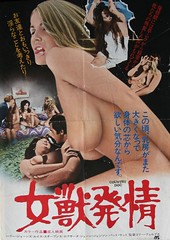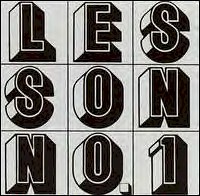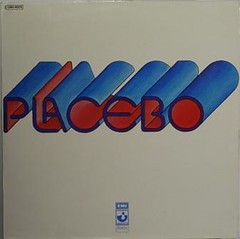This is an advertisement for the art music crowd: On 18/10/2008 Belgian artist Dennis Tyfus organizes the ‘Galmbal‘, a festival featuring artists such as Eric Thielemans, Han Bennink, Maja Ratkje and Paul Panhuysen.
Category Archives: music
I Am a Madman and WCC #66
[Youtube=http://www.youtube.com/watch?v=XaWOTEkExIk&]
“I Am a Madman” by Lee Perry in a dub version remixed by Mad Professor, YouTube bricolage by cinemakramp. The regular version of this song can be found on Perry’s album The Battle of Armagideon.
[Youtube=http://www.youtube.com/watch?v=Ip23Z0zKrP0]
The film used in the Perry clip is Fists of the Double K by John Woo 1973, his first feature film.
What makes Cinekramp’s choice of footage particularly appropriate is Lee Perry’s fascination with spaghetti westerns.
Speaking of martial arts film, Can dialectics break bricks? is WCC #66
P.S. I’ve recently been celebrating my lifelong love affair with Lee Perry’s work. On a general note on his work, it does not take much imagination to view his work as a strain of black surrealism or even surrealism tout court.
Introducing Undead Film Critic
Introducing Undead Film Critic.
What is Country Doc?
From its first post[1] to its latest[2], exploitation film posters, big breasts and low culture mouthwatering visuals galore. Similar blogs include Hugo Strikes Back, PCL Linkdump, Groovy Age of Horror and Bxzzines.
[Youtube=http://www.youtube.com/watch?v=WjhTM5zxlsM]
“C’est Beau la Bourgeoisie”
And while we’re at it, Georgy sent us this guiltiest of pleasure: Discobitch‘s “C’est Beau la Bourgeoisie” [3]. C’est pour la petty bourgeoisie.
The song is in the vein of “Perfect” by Princess Superstar and “Yeah Yeah” by Bodyrox (who started the “rockist” use of synths in dance tracks).
Reggae mythology
[Youtube=http://www.youtube.com/watch?v=PeYfF9EuFOo&]
“Prophecy” by Fabian
Today is an important day in reggae mythology. Haile Selassie was crowned today 80 years ago. Unlike P-Funk mythology, reggae mythology does not have a Wikipedia page. Its nearest equivalent page is Rastafari movement.
As a term, reggae mythology has the advantage of being a subcategory of black science fiction (mainly because of the Lee Perry link). The introduction of the concept will also allow easier understanding of terms such as 400 Years.
Speaking of Perry, I found compositions off “Revolution Dub” at YouTube, notably Woman’s Dub[1] and the original of “Doctor on the Go” by Junior Byles [2].
“Doctor on the Go” and “Woman’s Dub” are WMCs, I’ve added the 174th entry for what will become a 1001-piece series.
Happy 60th birthday Glenn Branca
American musician Glenn Branca turns 60 today.
Branca is an avant-garde composer and guitarist of the New York “downtown music” and “No Wave” scene. He first came to international attention with his early work on 99 Records such as Lesson 1 for Electric Guitar, his production of Theoretical Girls and his contributions to the soundtrack of The Belly of an Architect, a 1987 British film directed by Peter Greenaway.
See Branca live[1] in 1978.
See also Music of New York City.
Cross-pollinations such as BBC Radiophonic Workshop/Doctor Who and Studio di Fonologia Musicale/Death Laid an Egg
Tape editing: Bruno Maderna (left) and Luciano Berio (right)
Simon Reynolds published the director’s cut of an article[1] he wrote at the occasion of the 50th anniversary of the BBC Radiophonic Workshop, which was founded in 1958 on an unknown date. Similar radio services were started at the various public radios in Europe, all of influence to the emerging fields of electronic music and acousmatic music. Paris had the Groupe de Recherches Musicales which developed musique concrète, Cologne had Studio für elektronische Musik which nurtured the talent of Stockhausen, Italy had Studio di Fonologia Musicale with Bruno Maderna.
I’m probably generalizing, mixing studios with projects and radio with art projects. However, all of these projects share common characteristics: they are state funded (this is post-war, Marshall plan funded Europe), they involve electronic music and are centered around tape editing and thus the development of non-linearity in music recording.
So far the history of the BBC Radiophonic Workshop, which was probably the biggest, as well as the other scenes mentioned above have been best documented. However, such studios and projects must have existed all over Europe. It would be interesting to get your feedback of the scene of your country. Scandinavia, Spain, Austria, the Balkan, everywhere, let’s hear it from you. I’m especially looking for cross-pollinations such as BBC Radiophonic Workshop/Doctor Who and Studio di Fonologia Musicale/Death Laid an Egg.
I’m collecting the notes for this project at European public radio and experimental music.
New Lee Perry album
[Youtube=http://youtube.com/watch?v=cfUkWcMYwYY&]
“Pum-Pum“
Pum-Pum is a single by Lee Perry on his new album Repentance, his 54th studio album. Pum-Pum is a reference to the sexual slang word for vagina in early 20th century British and Patois.
I wonder what happened to “Disco Devil revisited 2007“, which I liked much more than this tune.
Top ten disco tracks for Scott Carpenter
Our musical correspondent Scott Carpenter asked me to make this.
You may have read Scott’s comments on this blog:
“I am an acolyte of jahsonic, mudd up![1], Mutant Sounds[2] and Analog Africa[3]. … for the disco, cosmic, Balearic sounds you cannot go wrong with Another Night on Earth[4] and alainfinkielkrautrock [5]. —Scott Carpenter via “[6]
Here we go.
If we assume disco started with “Soul Makossa” by Manu Dibango in 1972 we can make a top ten of disco tracks by moving chronologically from 1972 to 1981, and moving from proto-disco, to disco and touching the beginnings of post-disco.
- “Soul Makossa” by Manu Dibango[1]
- “Love Is the Message” by MFSB (only after the break)[2]
- “Wicki Wacky” by the Fatback Band[3]
- “Free Man” by South Shore Commission[4]
- “Phoenix” by Aquarian Dream[5]
- “Running Away” by Roy Ayers[6]
- “Keep on Jumpin’ by Musique[7]
- “There but for the Grace of God Go I by Machine[8]
- “Is It All Over My Face” – Loose Joints [9]
- “Ain’t No Mountain High Enough” by Inner Life [10]
Looking at this list after making it, I can’t fail to notice that I have not included enough of the gay thing in this list. Only “Free Man“and “There but for the Grace of God Go I” fit that bill.
Making top tens is difficult.
Marc Moulin (1942 – 2008)
Cover of the first Placebo album
Francophone Belgian producer Marc Moulin (1942 – 2008) died last Friday. He was 66.
His mid-eighties work with Telex is still influential to the electroclash scene; the track, “Moscow Diskow“[1], was a staple for DJs Frankie Knuckles and Ron Hardy on the dance floors of late 1980s Chicago clubs that were instrumental in the development of Chicago house music, and house music as such. What is to be appreciated is that Telex had a great sense of humor – for example – one of their compositions was called “Temporary Chicken.”
[Youtube=http://www.youtube.com/watch?v=9RaeUN20sDE&]
“Humpty Dumpty”
[Youtube=http://www.youtube.com/watch?v=eHgY9Lq1Wig&]
“Balek”
Just the other day, in my hometown record store, my brother overheard Quiet Village member Joel Martin ask: “Did you find me any Placebo yet?”. Placebo’s records (three were released between 1971 and 1974) are highly collectable and priced about €125 each when I last inquired.
Not fluffy clouds
From left to right: 16:58, 16:58, 16:59.
Antwerp, from South to North
Totally unrelated, outside of a storm cloud soundbite on the same record this track came from (actually I meant the Party Time album by The Heptones) is “To Be a Lover” by George Faith,
[Youtube=http://www.youtube.com/watch?v=Q7rgNM0IwzI]
in a Lee Perry production but a cover of William Bell‘s U.S. hit record …
[Youtube=http://www.youtube.com/watch?v=TkHO7OngDiY]
..”I Forgot To Be Your Lover“[1] (1968).
Perry’s version was probably recorded on a TEAC 3340[2] in the Black Ark studio.
George Faith’s album seems to have been different from the contemporary Perry productions: no broken glass, ghastly sighs and screeches, crying babies, and mooing cows here.








